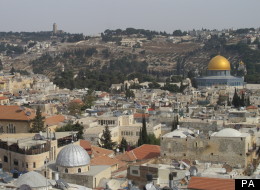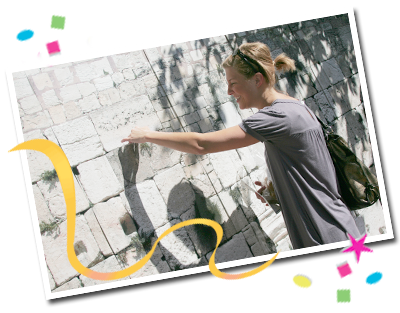For 500 years, Muslim devout have wanted to live near the Haram esh Sharif, the great platform on which the Temples of Solomon and Herod once stood and where now stand the glorious Dome of the Rock, Islam’s oldest religious structure, and El Aqsa Mosque, the third holiest in all Islam. Their mosques and madrasahs, or schools of religion, clustered along the old retaining walls of the Temple Mount, along with the Governor’s House, the courts of law, and libraries.

It took a good 1,700 years to make the Old City; one small piece of it would be the glory of any congregation on earth. And this not to mention the surrounds: Mount Zion on the southwest, where is located the reputed tomb of David, and, just above, the room of the Last Supper; or the Mount of Olives to the east, paved with the tombstones of devout Jews and the reputed tombs of Mary and Joseph, and the church built over the rock where Christ agonized in the garden. All in a stunning setting of hills below racing clouds, plunging valleys, rolling brown desert, and spectacular vistas. As the Talmud says, of the ten shares of beauty in the world, Jerusalem has nine.
MUST ADMIT I like the place in foul weather, in spitting snow and cold. The few tourists huddle in damp coffee shops, pressing their noses against frosted windows. A few Orthodox Jews march resolutely to the Wall, but in general the Old City is quiet, cold as a tomb. Arabs in shops crouch over charcoal braziers and wrap their hands around small coffee cups. Outside the walls, the traffic of West Jerusalem churns around one-way streets, blowing horns as though an expectant mother were in each car.
Then is the time to set your foot upon the Via Dolorosa, the Way of the Cross, going into the Old City by Damascus Gate, not St. Stephen’s. For if you go in by way of St. Stephen’s, you will have to consider the veracity of this way and its Stations of the Cross.
“Christ did not go that way,” a scholar once confided in me. “He was tried by Pilate near where the Armenian church is today. That’s the true Via Dolorosa.”
“Can you prove that?” I asked. “No. I only have archaeology, history, and common sense on my side.”
Whereas, if you go in Damascus Gate, you can cut straight through to Abu Shull rei’s small but warm restaurant (four tables), where his sons carry on the reputation for Jerusalem’s best hummus, and look in on the antiquities shops, which sell museum seconds. A Canaanite goddess. A pot from Hebron. A coin from Jericho.
On this day, though, I stopped in a shop in the Christian Quarter near New Gate, which Sultan Abdul-Hamid II had permitted to be punched through the wall in 1889 so Christians could have easier access to their holy places from the hospices like Notre Dame, then going up outside the walls.
The father I met there held his feet toward a small charcoal stove while young men, Christian Arabs, drank brandy and the wind blew thin snow against the door.
“How many Christians are there now in Jerusalem?” He pondered the question. “If by ‘Christian’ you mean one who loves those who persecute him, who turns the other cheek and lives by the precepts of Christ . . . none.
About the Author: Aria is a blogger who loves to travel and shares her experience. Aria likes to spend weekends in different cities. Her favorite city is Paris and she often enjoys Paris weekend days. Aria is currently living in Berlin.





Jerusalem is one of the places I really want to visit before I die. To me it has everything, it is a place where you can live history and find intense cultural experiences, plus is a really beautiful place and I guess I would have to be there for a long time in order to be satisfied with my visit. I know there are many debates about the exact places in which Christian events happened, take by example la Via Dolorosa, and still the whole place must be blessed.